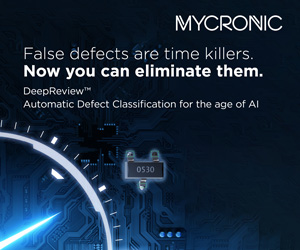20th Anniversaries of RoHS and WEEE
Twenty Years Later, How Far Have We Come?
SOURCE: TTI MarketEye
On January 27, 2003 both the RoHS and WEEE Directives became law in the European Union. Their provisions did not come into effect until July 1, 2006, for the RoHS Directive and August 13, 2005, for the WEEE Directive, but they both managed to set the electronics industry on edge and change its trajectory forever.
RoHS required numerous extraordinary changes to the design and manufacture of products, while the challenges of meeting RoHS resulted in significant changes to the Directive itself. RoHS began life with 10 exemptions to what seemed to be a relatively absolute ban on six substances: lead, mercury, cadmium, hexavalent chromium, polybrominated biphenyls (PBB) and polybrominated diphenyl ethers (PBDE).
It wasn’t until August 18, 2005, that Commission Decision 2005/618/EC defined the maximum concentration values we are familiar with today for these six substances. It furthermore defined them “by weight in homogeneous materials,” without defining what “homogeneous materials” meant (in fact, this term was never defined in 2002/95/EC).
While all of these substance restrictions had direct and significant impacts, perhaps the greatest impact was caused by the restriction of lead in solder used to attach components to printed circuit boards, wires to connectors and just about everything else. The standard solder of the day was commonly known as “63/37 eutectic,” because it was an alloy of 63 percent tin and 37 percent lead that melts and freezes at 183°C (see the tin-lead phase diagram for more information).
A dramatic amount of effort was placed on identifying solder alternatives and systems that could successfully use these solders and produce reliable goods. The EPA was even engaged to produce lifecycle assessments (LCAs) of the various alternatives, given the size and gravity of this project. One significant concern was risking picking the wrong solder and having the EU or some other market ban it down the road, forcing yet another round of redesign. Unfortunately, the results of that LCA were available a year too late to influence the decision.
In most cases, what we ended up with is a non-eutectic, three-element alloy of tin (Sn), silver (Ag) and copper (C) (and thus the acronym SAC) with a higher melting and freezing temperature range. “A typical lead-free solder (96.5 Sn, 3.0 Ag, 0.5 Cu – commonly referred to as SAC 305) has a melting point of 422°F (217°C) to 428°F (220°C).”[1]
Depending on where manufacturing occurs (due in part to the source of the additional energy required to melt SAC alloys vs. eutectic tin-lead alloys), lead-free solder, overall, is environmentally comparable to that of eutectic tin-lead solder[2]. So, whether environmental progress was made is debatable.
SAC alloys required different reflow solder equipment, PCB materials with a higher glass transition temperature (Tg), modified solder land patterns and different component lead finishes than were commonplace at the time. Fifteen years or so earlier, the industry came together to implement a different sea change in the same area: the move from PTH (plated-through-hole) to SMT (surface-mount technology). While RoHS could continue using the same form factors, the design of everything from semiconductors, semiconductor packaging, PCB laminates and materials, solder pad and through-hold dimensions, etc. depended on the temperatures these items were expected to see during all of their manufacturing processes. A mad rush began to redefine, redesign, recharacterize and requalify technologies that had been known, stable and reliable for decades.
Component manufacturers had to redesign products with leads that were no longer finished with tin-lead. In many cases, this provided an opportunity for them to simply stop producing older products that were perhaps not as profitable as newer replacements. Product end-of-life notices were rampant!
On July 1, 2006, the RoHS Directive’s substance restriction requirements became effective. After spending tens of billions of dollars along with enormous amounts of time and human resources to make all the changes necessary for compliance, manufacturers continued to produce reliable products.
The WEEE Directive was (and still is) primarily administrative. It requires manufacturers to pay fees to European Union Member State governments – and service providers – based on the quantity and weight of products they place on the market. The intent is to recycle – or reuse – equipment once its use life is over, rather than putting it, and all the highly refined and often unique (and toxic) resources contained, into landfills.
That the European Commission has seen fit to “recast” both Directives already and intends to do so again demonstrates that these were imperfect to begin with. That’s not unexpected – any new venture that is so complex is unlikely to be perfect out of the gate.
Today, both Directives are staring down significant recasts driven, at least in part, by the European Union’s Circular Economy Action Plan.
I expect RoHS, for instance, to allow use of a broader range of spares and upgrades than it currently does. Today the reuse of spares is limited to those items which have already been placed on the EU market and are compliant as of at least the date the piece of equipment being maintained was placed on the market. I would like to see that limitation expanded to allow spares/upgrades from anywhere in the world, as long as they are as compliant with the RoHS Directive as the item being maintained. There are numerous other aspects of the RoHS Directive that need revision as well, including the exemption review process.
The WEEE Directive has never met its recycling goals. Today the target is for between 55 percent and 85 percent of e-waste to be recovered and “prepared for re-use and recycled,” depending on the category specified in Annex V. The reality is that “less than 40% is recycled.”
This is not surprising. Manufacturers have never been required to design products to be modular, repairable and upgradeable nor have they been required to design them to be recyclable. I think this was a missed opportunity. Between the current EcoDesign Framework Regulation draft and the upcoming recast of the WEEE Directive, expect major changes in manufacturer responsibilities to improve these statistics.
The bottom line is that, while these Directives are already 20 years old, they are still flexing their muscle, maybe now more than ever before. Manufacturers and their supply chains dreaming of relief must instead double down and invest in material, design and production improvements.
Visit DCA at www.DesignChainAssociates.com or email the author with any questions or comments on this post.
[1] N Vahora, M Keeble, M Hasnine, Metallographic Preparation of Lead Free Solder, 2017
[2] Xiaoying Zhou and Julie M. Schoenung, “An integrated impact assessment and weighting methodology: evaluation of the environmental consequences of lead-free solder alternatives,” Proceedings of the 2008 IEEE International Symposium on Electronics & the Environment, San Francisco, CA, May 2008. doi: 10.1109/ISEE.2008.4562924.










